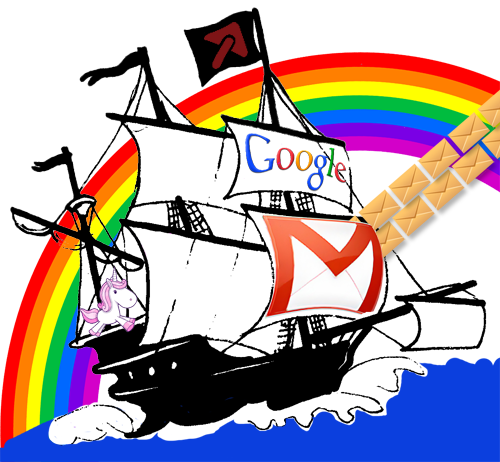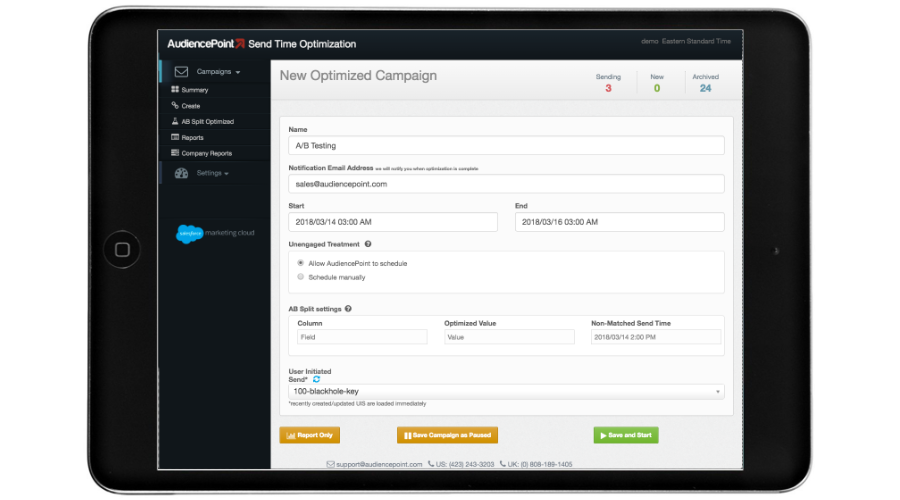AudiencePoint is thrilled to announce our new integration with Klaviyo! AudiencePoint is looking for partners to pilot our...
Many brands use email to stay in touch with consumers. If you’re wondering about the benefits of email marketing or how effective it is, this article will give you all the details. Keep reading to learn more about email engagement.
What Is Email Marketing?
Email marketing involves sending regular email content to a list of subscribers that promotes your brand and creates a connection with your audience. Email is an excellent way to stay in touch with a target audience that already knows about your brand or may have purchased from you before.
What Are the Benefits of Emails?
There are several benefits of using email as part of your marketing strategy. Benefits of marketing emails include:
- Email doesn’t rely on algorithms like social media.
- You can reach your entire email list at the same time.
- It provides an opportunity to segment content based on the varying needs of your customers.
- Emails that provide value create a lasting impression.
- It can lead to increased sales for product launches, promotional events, and everyday consumer purchases.
Each of these benefits makes email one of the most effective digital marketing strategies that companies should be using.
Is Email Marketing Effective?
Email marketing is effective, which is why many businesses use email as one of their main marketing strategies. One of the main reasons email marketing is so effective is its cost-effectiveness. You don’t have to spend much to write, design, and send marketing emails. As a result, email is the highest ROI digital marketing strategy, with an average return on investment of $36 for every $1 spent.
Another aspect that makes email effective is its ability to influence purchasing decisions. Sending a marketing email can be the difference between someone purchasing from your company rather than them choosing a different brand. Email marketing has this effect because it creates a direct connection with consumers that stands out from other marketing strategies.
Studies show emails directly impact consumer purchasing decisions, with 50.7% of consumers purchasing something at least once a month after receiving a promotional email. Studies have also shown that an email increases sales by 138% compared to when no email is sent.
What Are the Advantages and Disadvantages of Email Newsletters?
Email newsletters can be a great option for businesses that want to stay in touch with their audience through regular email content. However, like any marketing strategy, it can have advantages and disadvantages.
Advantages of Email Newsletters
The advantages of newsletters are:
- Maintains engagement: An important aspect of email marketing is maintaining high engagement rates. If engagement rates are consistently low, it can lead to higher bounce rates or emails being sent to spam. Regularly sending engaging newsletter content that connects with readers helps prevent this.
- Creates authority: Informational or educational email content creates authority that shows your brand is a reliable source of information. This increases consumer trust and makes subscribers more likely to follow a call to action when you send promotional email content.
- Low risk and high reward: There is a very low risk in sending newsletters. Email marketing doesn’t cost much, so you aren’t risking a big investment in a marketing strategy. The best part is the high reward of an engaged audience that is ready to make a purchase.
- Newsletter content is customizable: Something that stands out about email compared to other marketing strategies is the ability to personalize emails by including aspects that are tailored to a specific individual or group of subscribers. Sending segmented or personalized emails will make your company stand out and show that you care.
Disadvantages of Email Newsletters
While there are many advantages to email newsletters, there are still some disadvantages. However, most disadvantages come from common mistakes that can be fixed by optimizing your email marketing strategy. Common disadvantages of newsletters are:
- Spam: A common mistake companies make with newsletters is sending overly commercialized emails that are off putting to subscribers. While email promotions are great, if all you’re doing is sending promotional emails without offering additional value to subscribers, they will start ignoring emails, unsubscribing, or reporting them as spam.
- Undelivered emails: Emails that are poorly designed or not formatted properly may have low deliverability rates. This can be frustrating on the part of the sender, but it can be fixed by analyzing email metrics and finding the source of the problem, so you can fix it and get email campaigns up and running.
- Design problems: Common design problems, like emails not displaying well on mobile devices, will make email newsletter content less effective. However, many different email marketing tools can help you create well-designed emails that work on every device.
While there can be some disadvantages to email marketing, as you can see, there are fixes to each of these common issues. Overall, email marketing is an important strategy that is beneficial to most companies when done right.
Why Is Email Marketing Important?
One of the main reasons email is important is it has the potential to create a large percentage of a company’s sales. It’s usually recommended that marketing emails account for 25-35% of a business’s sales revenue depending on the industry. Therefore, optimizing your email campaigns can make a huge difference in company success.
Email is also important because it is a significant aspect of the overall consumer experience. More consumers than ever are purchasing products and services online, making email a bigger part of the consumer purchasing and decision-making process. If you aren’t sending email content, your brand is likely at a disadvantage when it comes to the modern buyer’s journey.
What Is the Difference Between Email and Social Media Marketing?
The main differences between email and social media marketing are the platforms and the type of audience. When you send marketing emails, you’re reaching out to a predefined group of email subscribers. The exact people you want to send the email to will receive it, allowing you to be more specific in your message.
On the other hand, social media content works a bit differently. While social media can allow new people to discover your brand, your content can’t be as specific, since new people won’t be as familiar with your company. Social media algorithms also control your reach, so you will only reach a small percentage of your followers with each post.
Is Personalizing Emails More Effective?
Email personalization is a highly effective email marketing strategy. Personalized emails can be more effective than other email content. Studies have shown that personalized emails have 26% higher open rates, and marketers report as much as a 760% increase in email revenue after sending segmented email campaigns.
How AudiencePoint Can Help You Tackle Your Email Marketing Needs
AudiencePoint can help you take advantage of the many benefits of email marketing. AudiencePoint’s email insight software helps you track important email marketing metrics and gives you actionable data into how you can improve your email marketing campaigns.
If you want to avoid some of the common pitfalls of email marketing, like losing subscriber engagement, having high bounce rates, or sending content that isn’t specific to your subscribers’ needs, AudiencePoint is the answer. Our software will provide you with everything you need for email success through analyzing email subscriber activity and helping you optimize things such as email send times.
By constantly tracking data, you can make changes to your email strategy at a moment’s notice. AudiencePoint also helps you recognize when subscribers have become inactive, so you can create a re-engagement email campaign tailored to their needs to get email engagement rates back on track.
If this sounds like it would be beneficial for your business, contact us to learn more about how AudiencePoint can help you.





